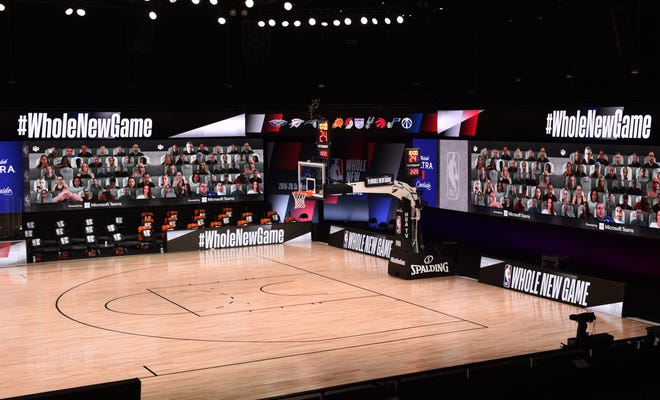Silence In Stadiums
October 15, 2020
The scoreboard reads 133-132, four seconds left on the clock. Ball is inbounded, caught at half court. Three seconds. Couple dribbles to the left wing. Two seconds. Crossover into a stepback three. One second, then zero. It’s 133-135 at the buzzer. Game over. It was a game winner that had everything – stakes, suspense and the adrenaline rush. Everything, of course, minus the authentic, passionate cheers from a live audience of eager fans.
Sporting events without live fans have been strange, to say the least. The diminished energy from a lack of consistent cheering has led to less engaging games. Creative plays, clutch moments and home teams are missing out on the momentum fostered by a crowd, and so the game has changed for players and fans.
The NBA playoffs have especially suffered, with big shots from players like Luka Doncic and Anthony Davis missing its moment-defining burst of energy. The tension in the NBA Finals have also significantly lowered thanks to the absence of pressure that players would otherwise endure as part of their journey to achieve a championship.
Broadcasting networks have attempted to compensate with canned cheers, a hit or miss alternative. Poorly manufactured cheers are sonically displeasing and take away from the viewing experience. Decent ones manage to fill in the awkward intervals, but are unable to replicate the patterns and sounds of real fans. Despite its shortcomings, the cheers are a nice gesture to keep sporting events as normal as possible.
In between the intervals of the faux cheering comes an added bonus of the empty stadiums. Raw game sounds, ranging from trash talk to communication between players, are frequently audible due to the silence in the stadium, creating a rather immersive experience while watching from home.
Though it hasn’t been easy, this period of quarantine has given fans an opportunity to conversely appreciate what they bring to the table. It’s an indication of the value of being a fan—a value that, paired with the players, builds the core of sports.



![AAAAAND ANOTHER THING: [CENSORED] [REDACTED] [BABY SCREAMING] [SIRENS] [SILENCE].](https://thehowleronline.org/wp-content/uploads/2025/06/lucy-1200x800.jpg)

















































![AAAAAND ANOTHER THING: [CENSORED] [REDACTED] [BABY SCREAMING] [SIRENS] [SILENCE].](https://thehowleronline.org/wp-content/uploads/2025/06/lucy-300x200.jpg)



